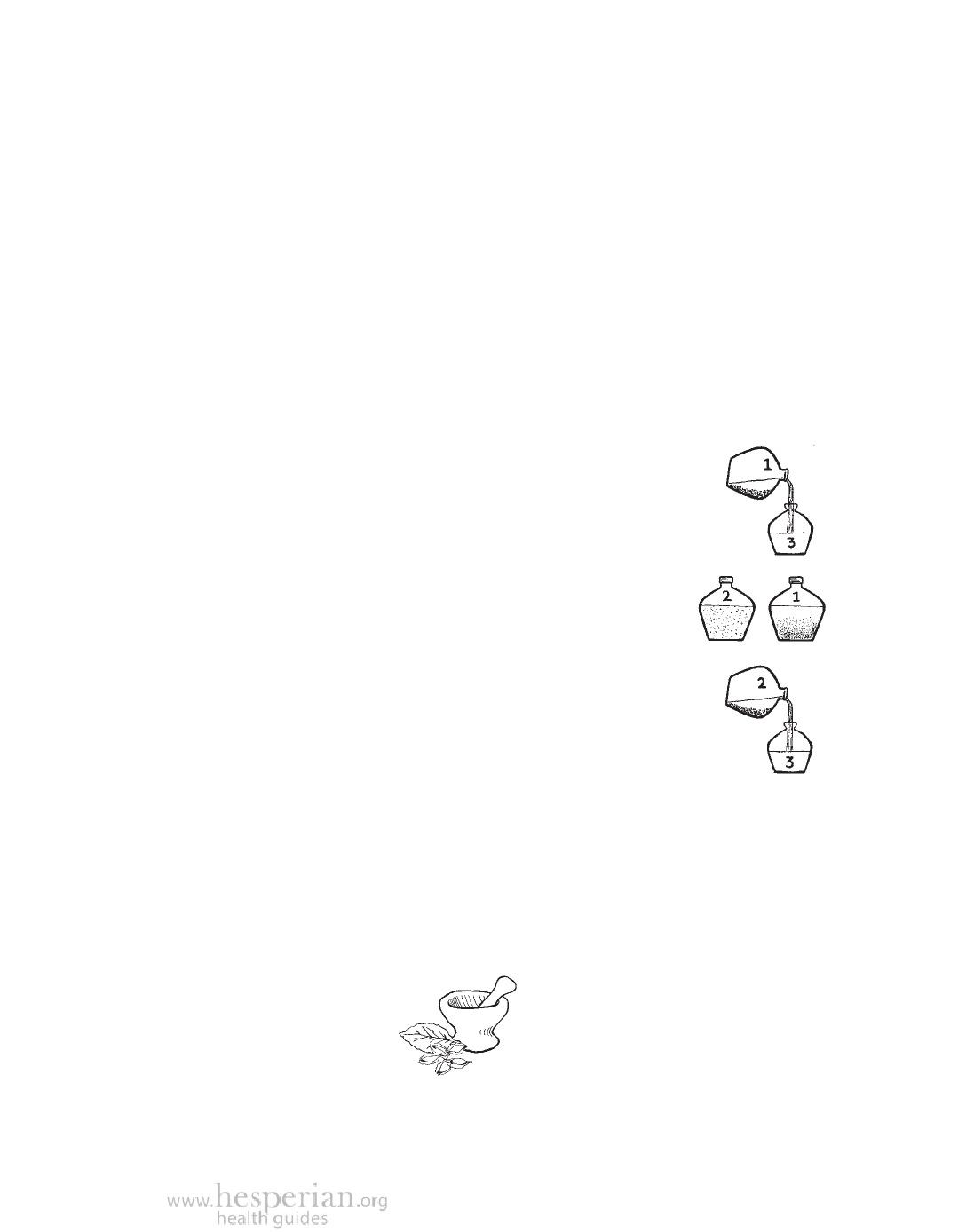
Make Water Safe to drink
93
Settling water
Settling water allows dirt, solids, germs, and worms that cause some illnesses to
fall to the bottom of the container. Storing water for 5 to 6 days will reduce the
number of germs in the water. But some germs, such as giardia, will not be killed
by any length of storage. For this reason, use another method after letting water
settle to make it safe, such as filtering, chlorinating, or solar disinfection.
3-pot method
The 3-pot method settles water so germs and solid matter fall to the bottom.
This method is safer than settling water in 1 pot, but it does not make the
water completely free of germs. The 3-pot method should always be followed by
disinfection (see page 97).
Morning, Day 1: Fill pot 1 with water. Cover the top and let it settle for 2 days.
Morning, Day 2: Fill pot 2 with water. Cover it and leave for
2 days. The dirt in pot 1 is beginning to settle.
Morning, Day 3: Pour the clear water from pot 1 into empty pot
3, making sure not to pour out the sediment at the bottom of
pot 1. The water in pot 3 is now ready for disinfecting. The
dirty water and sediment left in the bottom of pot 1 can be
poured out. Wash pot 1 and refill it with water. Cover it and
let it settle for 2 days. (It will be poured out and ready for
disinfecting on Day 5.)
Morning, Day 4: Pour the clear water from pot 2 into pot 3 for
disinfecting. Wash pot 2 and refill it with water.
Every few days, wash the clear water pot (pot 3) with boiling
water. If you use a clean hose to siphon water from one pot to the
next, the sediment will be less disturbed than if you pour the water.
Using plants
In many places, people use plants to make water safer to drink. Moringa
seeds are used in East Africa. Moringa is called malunggay in the Philippines,
horseradish tree or drumstick tree in India, and benzolive tree in Haiti and the
Dominican Republic. To use moringa seeds:
1. Dry the seeds for 3 days.
2. Grind the seeds to powder.
It takes 15 ground
moringa seeds to
clear 20 liters of
water.
3. Mix the powder with a little
water to make a paste, and add it
to the water.
4. To dissolve the paste, stir for 5 to
10 minutes. The faster it is stirred
the less time is needed.
5. Cover the container and set it
aside to let it settle. After 1 to 2
hours, pour the water into a clean
container. Be careful to leave the
solids in the first container.
A Community Guide to Environmental Health 2012